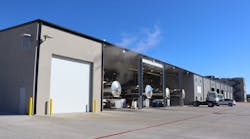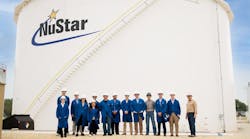Construction spending increased from January to February and from a year ago, as private residential and public construction grew for the month and private-sector demand increased for the year, according to an analysis by the Associated General Contractors of America. Association officials said the February data indicates the need for Congress and the Trump Administration to work together to reform dated tax codes and increase investments in aging infrastructure to boost broader economic growth that will stimulate more demand for construction.
"While the overall market for construction continues to expand, public investments remain down for the year and private nonresidential activity could be much stronger," said Ken Simonson, the association's chief economist. "Two factors that are clearly holding back construction demand are relatively high effective tax rates for many businesses and uncertainty about future demand for public infrastructure upgrades."
Construction spending in February totaled $1.192 trillion at a seasonally adjusted annual rate, Simonson said. He added that the February rate was up 0.8% from the month before and 3.0% from the February 2016 level.
Private residential construction spending increased by 1.8% between January and February and rose 6.4% over the past 12 months. Spending on multifamily residential construction increased 2.0% for the month and 10.6% year-over-year, while single-family spending climbed 1.2% for the month and 3.4% from a year earlier.
Private nonresidential construction spending declined 0.3% for the month but increased 7.5% year-over-year. The largest private nonresidential segment in February was power construction (including oil and gas pipelines), which gained 3.0% for the month and 9.4% over 12 months. The next-largest segment, commercial (retail, warehouse and farm) construction, declined 0.8% in February but rose 13.6% year-over-year. Manufacturing construction fell 1.7% for the month and 9.8% from a year before. Private office construction spending grew by 0.5% for the month and 24.8% compared with February 2016.
Public construction spending inched up by 0.6% from January to February but declined by 8.0% from the February 2016 rate. Highway construction increased by 1.3% for the month but is down 5.1% year-over-year. Other transportation segments (transit, passenger rail, airports and ports) inched up 0.8% for the month but are down 10.4% relative to February 2016. Sewage and waste construction expanded by 0.1% for the month but plummeted by 27.3% for the year. Water supply spending declined 1.5% and 15.2%, respectively.
Association officials urged Congress and the Trump Administration to work together on reforming tax rates for employers--including pass-through entities--and finding a way to rebuild the nation's infrastructure. They noted that many commercial construction firms pay among the highest effective tax rates because, as pass through entities, they pay at the personal tax rate. And they added that congested roads, aging water systems, and dated ports are undermining the country's global competitiveness.
"Congress and the President should be able to find common ground on securing our continued economic success," said Stephen E Sandherr, the association's chief executive officer. "Making our effective business tax rate more competitive and modernizing our aging infrastructure will go a long way in boosting economic activity and demand for construction."








